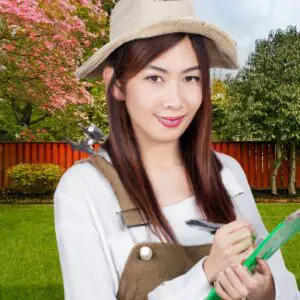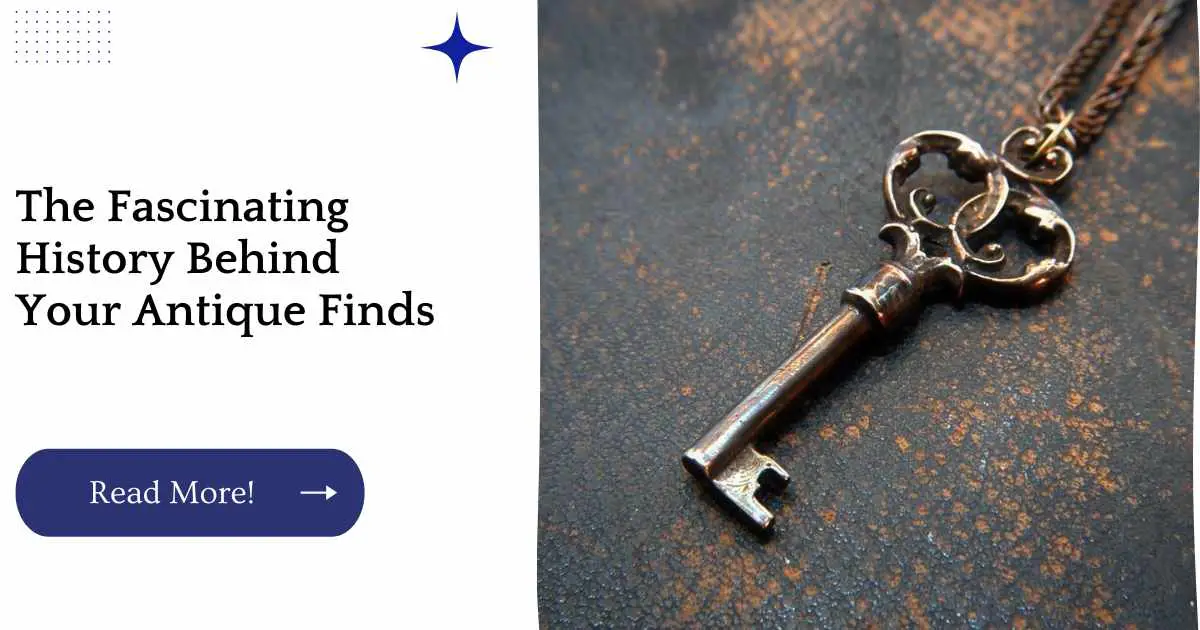Antiques are not just old things they are the memories and stories that go with them. Antique lovers want to know every detail about their finds, from where they were made to who bought them in the past.
| Takeaways |
|---|
| Antiques can offer valuable insights into the past and connect us with history. |
| The stories behind antiques can be just as valuable as the objects themselves. |
| Antique hunting is a fun and rewarding way to explore history and discover unique treasures. |
| Preservation and restoration are important for protecting and maintaining the integrity of antiques. |
| Antiques can be found in unexpected places, and it’s important to know where to look and what to look for. |
Read on for an overview of how these items came into being, what makes each of them so special, and how you can find your own antique treasure!
Antique Furniture
Antique furniture from the 1700s and 1800s was made with a lot of hard work. The furniture was handmade, so each piece is unique. It was also handmade using traditional methods, making it well-constructed to last for years after you buy it.
Unlike modern furniture, antique pieces are more likely to have imperfections like scratches or dents because they were made by hand.
Whether these imperfections are visible or not depends on how well the piece has been cared for over time; if you look closely at an antique table top or other surface that is in good shape, you may notice some tiny cracks where glue dripped onto it while being crafted—but this kind of detail makes even a scratched-up chair worth keeping!
“If you’re new to antique hunting, our beginner’s guide to antique hunting is a great place to start. From where to look to what to look for, we’ve got you covered with tips and advice to help you make the most of your antique hunting adventures.”
Antique Heirlooms
Heirlooms are a special class of antiques that have been passed down through generations. They may be valued for their sentimental value, but they’re also often worth money.
The most common type of heirloom is jewelry, but furniture and decorative accessories can also be considered heirlooms if they’ve been in your family for many years or have significant meaning to you.
Heirlooms can be anything from jewelry to furniture, depending on the individual’s preferences and financial situation.
Heirlooms are usually handed down within families; however, they can also come from other sources such as friends or even strangers who wanted the item to stay in circulation so it won’t become extinct.
“Finding hidden treasures on your antique hunting adventures is all about knowing where to look and what to look for. Our guide on 10 tips for finding hidden treasures on your antique hunting adventures offers practical advice and insider tips to help you uncover valuable antique finds on your next adventure.”
Wrought Iron
Wrought iron is a type of iron that was made into objects, such as nails and decorative accents for furniture.
Wrought iron was very popular in the Victorian era due to its beautiful and intricate designs. For centuries, people have been working with wrought iron to create a variety of different products that can be used for both functional and decorative purposes. It’s not just limited to making jewelry anymore!
You can find wrought iron pieces in your kitchen drawers or cabinets, on tables at restaurants and cafés you name it!
They’ve become so common nowadays that you probably don’t even think about their history when you see one sitting around somewhere else than in an antique shop (or if you do think about it—please tell us why!).
“Antique restoration is an important way to preserve the past for future generations. Our guide on preserving the past through antique restoration offers valuable information and tips on how to restore and care for your antiques.”
Heirloom China
If you have a family heirloom, chances are it’s something that’s been passed down through the generations. And if you’re lucky enough to still have your great-grandmother’s china set in pristine condition, then it could be worth quite a bit of money.
The most valuable pieces of antique china include cups and saucers, teapots and pitchers; however, anything made by a fine manufacturer is likely to be worth something.
Such manufacturers include Wedgwood and Spode (who started out making fine bone china), Royal Doulton, Royal Worcester and Coalport (who started out making earthenware) amongst many others.
Pottery
Pottery is an ancient art form. It’s been around for thousands of years, and people have been making it since the time of the ancient Greeks and Romans. Some believe that pottery dates back as far as 7500 BC, but most scholars agree that it was first created in Mesopotamia around 5000 BC.
While there are many different types of pottery, they all fall into four main categories: earthenware, stoneware, porcelain or china (which includes bone china), and glass.
Earthenware is made from clay that’s fired at a low temperature; stoneware is fired at a slightly higher temperature than earthenware; porcelain or china uses feldspar and quartz in addition to clay; and glass is technically not a type of pottery because it doesn’t include any clay or other materials besides sand (and sometimes soda).
The earliest examples we have of ceramics were used for food-storage containers like jars or bowls—but these vessels were usually decorated with symbols instead of patterns on their surface like we see today because people didn’t know how to make glazes yet!
The earliest decorative styles included geometric designs such as triangles or squares along with animal motifs like tigers or elephants because those animals were often found at this time period (about 4000 BC).
“Antique treasures can be found in unexpected places, from flea markets to estate sales. Our guide on finding antiques in unexpected places provides tips and tricks on where to look and what to look for, helping you uncover hidden treasures in unexpected places.”
Quilts And Embroidery
The history of quilts and embroidery is a fascinating one, as it’s tied to the history of many other household items. It’s also one you might be surprised by quilts were originally made for warmth, not comfort.
Quilts were first used in medieval times, when wool was hung on walls or stuffed underneath pillows for insulation. Even then, though, quilting was considered an art form and put into use as decoration in homes rather than just a way to keep warm on chilly nights.
As time went on, people began making their own quilts out of scraps they had collected over time or old clothing they no longer wore (this is where the tradition began).
And while these early attempts at making quilts weren’t always visually pleasing think threadbare fabrics held together with rope they served their purpose well enough! After all: what matters most when keeping yourself warm?
“The thrill of the hunt is what drives many antique collectors and treasure hunters. Discover some incredible stories of antique finds with our guide on the thrill of the hunt: stories of incredible antique discoveries, and get inspired to start your own treasure hunting journey.”
Conclusion
Antiques can be a great investment, but they’re also a wonderful piece of history to be passed down through the generations.
Whether you are just starting out in this exciting hobby or want to learn more about the history behind your antique finds, we hope that this article has provided some useful information!
Further Reading
For more information on the history and stories behind antiques, check out these articles:
The Fascinating History of Antique Turquoise Jewellery: This article delves into the history and significance of turquoise jewelry in various cultures and time periods, from ancient Egypt to the American Southwest.
The Fascinating History of Antique Pin Cushions: Learn about the interesting history of pin cushions and how they have evolved over time, from utilitarian objects to decorative collectibles.
Antiques with Fascinating Back Story: This article highlights several antiques with intriguing backstories, from a chair with a hidden treasure to a painting that survived the sinking of the Titanic.
FAQs
What is the history behind antique turquoise jewelry?
Antique turquoise jewelry has been prized for its beauty and spiritual significance in various cultures throughout history. It has been used for decorative and ceremonial purposes, as well as for its supposed healing properties.
How have pin cushions evolved over time?
Pin cushions have gone from being primarily utilitarian objects to decorative collectibles. They have also been used to showcase embroidery and sewing skills, and have even been used for political and social commentary.
What are some antiques with interesting backstories?
There are many antiques with fascinating backstories, such as a chair with a hidden treasure, a painting that survived the sinking of the Titanic, and a silver cup with ties to the American Revolution.
Why are antiques valued for their stories?
Antiques are often valued not just for their aesthetic or historical significance, but for the stories they tell. These stories can help us connect with the past and better understand the lives and cultures of our ancestors.
How can I learn more about the stories behind antiques?
There are many resources available for learning more about the stories behind antiques, including books, articles, and museums. Additionally, talking to antique dealers and collectors can provide valuable insights and information.

Hi there! My name is Hellen James, and I’m here to talk to you about treasure hunting. I’ve been a fan of treasure hunting ever since I was a kid, and if you’re a fan of treasure hunting or just like the idea of finding a long-lost fortune, then this blog is for you.

